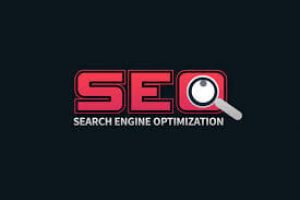
Introduction to Digital Marketing
Marketing has always been customer-centric over the years, the way services and goods are delivered has changed but the tactics have stayed the same. Technologies have brought change in all industries and marketing is no different, from print to digital media. The exponential growth in digital marketing is the direct product in internet and social media penetration.
Unlike the conventional marketing strategy, you don’t have to go door-to-door to persuade people how good the product is, but rather the Facebook ‘ likes ‘ and Twitter ‘ followers ‘ do this job.
Digital Marketing revolves around four things
Social Media : Using networking media such as Facebook, and twitter to connect with the client base. Using it as a support tool, reveal discount and exclusive offers to boost sales
SEO: Optimizing the SEO or Search Engine is a strategy that helps a site to receive more traffic from search engines such as Google, Microsoft, Yahoo, etc. It is broken down into two categories, off-page SEO, and on-page SEO
Content Marketing: The aim of Content Marketing is to maintain and attract consumers by regularly producing useful and meaningful content with the purpose of engaging targeted audiences to drive profitable client action. To businesses, content marketing is important because knowledge people find their purchasing decision having an effect online.
Advertising:Online advertising has many advantages over conventional ads and the key difference is targeting. Most online marketing platforms support banner / text / rich media ad formats that are billed in three ways CPM (Thousand Cost), CPL (Cost per lead)In CPM, the advertiser charges for every 1000 ad views that the ad is getting, while CPC is the amount of money that advertisers pay to search engines for a single click on their advertising that takes one user to their website. Search engines and web publishers pay for any click the advertiser pays. Another type of advertisement is Cost per Lead, in which the advertiser pays a specific sign-up from a customer interested in the advertiser’s offer.
Search Engine Optimization – SEO Tutorial

What is SEO?
SEO is the process of improving your site’s structure, content, and organization to enable the search engines to correctly index them. This also means doing promotional activities to raise your rating in the search engine
Before we look into this any further, let’s first understand –
How Does Search Engine work?
The following Spiders or Web Crawling, Indexing & Displaying are performed by almost every Search Engine.
Spiders & Crawlers: Spiders crawl in pursuit of material over the internet (thus the term Spider). If the related content is scanned and found, they copy the searched content and store it in a database for search engines. When scanning a web page, they take note of links from this page to other web pages and then search the related web pages as well, and this cycle continues with all web pages. (For example, page A links to page B which links to page C in turn. Page A, B, C and any page linked from page C are stored here).
Web Crawler can collect the following information (not limited to) from a Web page-
Indexing: Now that information on the website is stored in the Search Engines Server, how does it know which page to connect to the search results and which one on last? Level Indexing in.
Rankings are rendered using keywords.
As the engines crawl and index the web-based content of websites, they keep track of those websites in keyword-based indexes. The search engines have millions upon millions of smaller repositories, each based on different keyword words or phrases.
Next query, how does the search engine decide which keyword a page will rank for? To decide how the search engine looks at the page’s content, Page Title, Page URL and other variables Next query, presume that there are 20000 web pages each catering to the same keyword says football. Why does the search engine decide which page to view as # 1, # 2 and so on … Consider search engine ranking criteria that consider domain age, domain trust, topicality, number and importance of external links to the website, social signals and so on. It will be addressed in more depth later in the tutorial
Displaying: The last step in search engine operation is finding the best-matched results for search queries, which is showing the search result in the browser.
Role of Keywords in SEO
The keyword is actually the key to SEO. The keyword is what a person or user enters into a search engine to find specific information.
Keywords are part of the metadata of a web page and help search engines fit a suitable search query address.
Keyword Density: Often it is misunderstood that by including more keywords which describe your website can eventually help search engine to bring your website on top. In fact, more keywords sometimes get you penalized for “spamming” or keyword stuffing. So, from an SEO point of view, using keywords wisely is mandatory. And what is Keyword’s perfect frequency? Keyword density is assumed to be 3-7 percent for the major and 1-2 percent for the minor keywords for the best result.
Keywords in Special places, Page titles & Headings: Where exactly the keyword appears on your web page is imperative. It counts more if you have keywords especially in URL in the “page title, the headings, the paragraphs.” For example, if your competitor’s web page has the same number of keywords as your web page but if you have used the keywords in your URL then your web page has more chances of standing out than your competitor does.
Placing the keywords in the “Page Title” or “Tag Heading” is known to be the safest place to position the keywords. The explanation behind this is that the search engine searches in your “Title tag” first for the keywords and then in “Heading tag.” The basic keyword for title tags is around 70 characters max.
For order to be most successful a title tag, needs to be sponsored in certain areas of every web page, such as the “headline.” Your headline should be the page’s largest headline rich with primary keywords, and you can use secondary keywords in your headline as well. Headline length is not constrained but often favored about 7-8 words length. There are other set conditions for the best result for keywords as seen in the table below.
| Keywords | Criteria for best SEO result |
|---|---|
| Keywords in URL | The first word is the best to position for the keyword in URL |
| Keywords in the Title tag | Keywords should be 10- 60 characters at the beginning of the title tags, no special characters |
| Keywords in the description meta tag | Show theme less than 200 characters |
| Keyword density in the body text | 5- 20 % of the content |
| Keywords in Headlines | Use Hx font style tags appropriately |
Word Stemming
Search engines such as Google uses term stemming to query results. Word stemming makes all types of word-singular, plural, verb form and related terms for a search query in question. For example, if anyone searches for “Mountain Track,” the search result will be maintained for all variants of that word, such as “Mountain Tracking,” “Mountain Trackers” etc.
Ranking and Ranking factors
Meta-tags: providing Metadata to the search engines was one of the earliest approaches to optimize the website high in performance. Metadata is none other than the data contained on that page.
There are two important meta-tags or meta-data
- Meta description
- Meta Keyword
You can add both the Meta keyword and Meta definition to your search engine rankings. The meta description tag is intended to be a short and succinct overview of the material on your website. The meta-story limit is around 170-200 characters, you write a unique story for each page of your web. The meta summary format should look this way.
Example:
Meta-keywords for website “proadvisor247”
<meta name=”keywords” content = “free online education,SAP testing, etc.”>
<meta name=”description”content= “Brief description of the contents of your page.”>
Link Building
On Page & Off page Optimization
SEO optimization is mainly categorized on page optimization and off page optimization into two parts.

Positive Off-Page Optimization
Off-page SEO is the process of boosting your search engine rankings by getting external links pointing back to it. The more and better links you can get to your webpage, the better it will rank in search result A quality backlink is considered good from the search engines point and has the maximum effect on your off-page SEO. A standard backlink has features such as
- Incoming links from high page rank web page
- Use different anchor texts
- Dofollow or Nofollow links
- Getting a backlink from similar niche blog or website
- Avoid black hat SEO
- Good Domain Authority
- High Trust
- High Relevance in the subject matter of the linking and destination domains
- Site Age- Shows site stability
What you should NOT do for Negative off-page
Link Buying: If you get caught penalty is huge
Cloaking: Try to prevent cloaking (representing the different page to search engine then your original web page)
Domain Hi-jacking: It is when someone removes your domain or misuses your domain by modifying the domain name registration without your realizing it. It’s never a criminal act to do so.
Other Black Hat Techniques
Positive On-Page Optimization
On-page optimization directly deals with the content and structure of the website. On-page optimization focuses on
- Unique title tags and Headlines
- Keyword frequency in the
- URL
- Body Texts
- Headings
- Synonyms
- Copywriting
- Adding description to images
- Good Internal Navigation
What you should not do for Negative On Page
- Stop negative over-optimization penalty (OOP) since keywords don’t repeat very much
- Link to a poor neighborhood: Do not refer to poor page rank on Farms or any other platform
- Avoid poison words: The word “connect” in a title tag is considered to be poison words or to avoid words. There are also other definitions of poison you can stop
- Avoid stealing text or images from other domains
- Avoid Excessive cross-linking
- Do not redirect users to another page via refresh meta-tags, send your visitor to another page immediately unless he/she has clicked on it
For the best SEO result for your blog, always update it updated, as if your blog is sluggish or has broken links, you won’t rate as high in search engines.
SEO Audit and Link Removal
SEO Audit and elimination of links is very necessary for the effective operation of your website because the search engine changes from time to time their algorithm. For your website to be successful, you need to keep up with their latest search engine guidelines and requirements. Ignoring the audit of links could place your website at high risk.
Many online resources such as Google webmaster software, Moz, Open Site Explorer, Majestic SEO, etc. are available for link audits and link elimination. It will analyze the ‘ backlinks ‘ and provide some useful metrics such as
- Specific URLs that link to your site
- The pages on your site that each of these URLs link to
- Anchor text used by each incoming link
- Whether each incoming link is followed or no-follow
You need to be cautious when deleting low-quality links, because some of them may be highly important to your website and come from upswing websites. They could become a significant source of traffic in the future.
What are the characteristics of ‘bad links’
- Links with the same anchor text coming from multiple sites
- Links from sites that are unrelated to your niche
- Links from low traffic and low PR ( Page Rank)
- Links from articles directories or sites that look like link farms
- Links from link exchanges
- Paid links
- Links from sites that are not in the Google Index
- Spammy links in blog comments
If the owner of the website does not delete bad links from your page, then you can use the disavow tool from Google. This disavowing method eliminates bad ties.
This disavow tools are applicable in condition like
- When you get a manual action
- Webmaster won’t remove the bad links to your site or charge you to remove them
- When you see links pointing to your site you do not want to be associated with
- When you are worried about negative SEO
- You see links pointing to your site you do not want to be associated with
- You saw a link bomb attack and are afraid it might hurt your site
- You are afraid someone will submit a spam report for you
- You see your ranking dropped and you think it has to do with an algorithm Google ran, example: Penguin algorithm

Social Media Marketing: Tips and Secret
Social Network Marketing is about using social media platforms as marketing tools for sales optimization or brand awareness growth. Digital media marketing uses technologies such as SMO (Social Media Optimization) in two forms
- Adding links to social media content, such as sharing buttons and RSS feeds
- Promoting websites via social media via tweets, blog posts, and status updates
Social Media Marketing lets a company get direct input from consumers, networking networks like Twitter, Facebook, Instagram, Myspace, Linkedln and Youtube that have contributed greatly to social marketing in the past few years. Social media’s success in marketing derives from very “personal” connections between the customer and service renderers.
Facebook Marketing
The layout of Facebook is more comprehensive than other social networking sites. These encourage a company to include images, videos, longer explanation choices, and testimonials while other followers may share their opinions for others to see on the product page. Facebook will connect back to the twitter account of brands and even send out reminders of events. It can be achieved by communicating on Facebook with various groups or business groups in your area, admin page and direct message to admin for site promotion. You can also build your own personal page where, for example, you can upload videos or website content, here we have a Facebook page “proadvisor247,” which has reached many e-learners through Facebook.
Video Promotion
Videos are one of the fastest ways to get to your customers. The visual effect has more consumer influence than print or digital text, allowing a more compelling clarification of the product than any other medium. “Youtube” marketing transforms, viewers into followers, and followers into customers. There are also more chances of getting a good rating for video pages on your web because there’s far less competition for video pages.
One way to do this is to insert multiple videos on a single web page to create a series of videos connected. Another choice is to re-use your videos to create content related to it. It includes presentation, screenshots as podcasts and photos, downloads of transcripts and PDFs.
Conclusion
That’s the scoop on digital marketing. As you can see, the internet is, by far, not the only place for marketers to gather success, even today.
Of course, no one can afford to miss out on the web’s opportunities and every marketer will eventually have to learn online marketing.
Nevertheless, using a few of these offline marketing strategies will help you avoid placing all of your eggs in one basket and diversifying your lead generation beyond social media, content marketing and the like.
Plus the world of offline and online collides. To order to exploit new technology, conventional appliances such as fridges, ovens and even advertisements must all be modernized.

